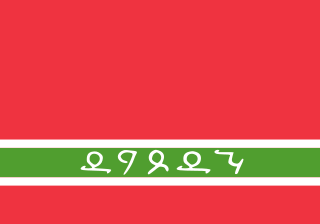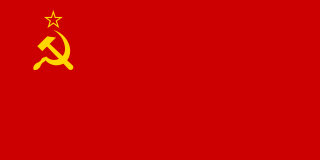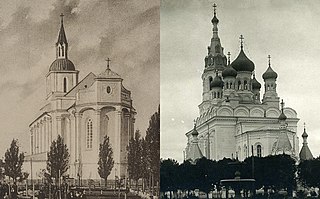Notes
| | This section is empty. You can help by adding to it. (January 2025) |
Lezgin clans or sykhyls [1] (also tukhums) (Lezgian : си́хил, [sykhyl]) are traditional Lezgin kinship groups sharing self-identified through descent from a common ancestor.
The Lezgin name for clans is shykhyl «сихил» comes from two Lezgin words tsi «цӀи» and khel«хел» literally “bloodline”. [1] [2] Lezgins also use the term tukhum«тухум», it is a term is more general and used by all Dagestani peoples for a tribe or family. [3] The term is used to describe different clan structures for different ethnicities and does not mean the same thing from one ethnicity to the other.
After Russian conquest of the Caucasus the Lezgin sykhyls or tukhums has all but vanished. [4] While the aul was, like the Avar and Dargin auls, the basis of Lezgin society in pre-revolutionary times, the aul and the Jamaat have lost their role. [4] The reasons for this range from their homeland being more open to external influence, culturally from neighbouring Azeris and politically from the USSR, [4] as well as the loss of the Lezgin Tariqa (Мюридизм) to the USSR's state atheism and the more recent penetration of Salafism into Lezgin society. [5]
Each sykhyl spoke a different dialect of the same Lezgic languages, a common spoken Lezgin dialect unintelligible to people outside the village. [6] Despite the fact that during this period the Lezgin lived in relatively closed conditions of mountain gorges, which contributed to more demarcation in terms of territoriality than rallying around a single center, they retained the self-consciousness of a single ethnic group based on a common culture and a single language.
| Clans | Groups | Villages |
|---|---|---|
| Lazar | КIекрезчирайбур, Шатдин, КIелет-лацар, Кетшар, Тачанар, Рухкалчукайбур | Laza (Qusar) |
| Lakar | Айибар, Сеферар, Пиримар, Тигьирар, СикIер, Шухунар, Шагьабасар | Ləgər, Ləgəroba, Ləngi, Lgar (Axtı) |
| Quruşar (Gelar) [7] | Хайтакьар, Гьилевар, Тетецьар, Фалакьар, Къызырар, Хъиртар, Мисрияр, Зангавар, Авурар, Къуьлдуьрар, Гьебешар, ЧIулавар. | Quruş, Doqquzpara, Dağıstan |
| Baxsuğar | 1.Али кІар2.Баш кІар3. Хушум кІар4. Тумакь кІар5. Ворха (Фарух) кІар6. Тадам (Дедем) кІар7.ЦІарал сихил | Baxsuğ, Qurah, Dağıstan |
| Çeper | Абдуллагьар, Лак1ар, Ювар, КIамаъар, Ягъияр, Гьесенар> | Çipir, Qusar, Azərbaycan |
| Ünüğar | Айдаяр, Арабар, Чакъалар, Фекьияр, Гьажиханар, Пиемар, Татлаяр, ТIигьирар, Мискискар, Къарабагьвияр, Эгрияр, Кесдияр, Абукарар | Ünüğ, Ünüğoba |
| Kuzunar | Немцар, Талакьар, Гьизирар, Къадияр | Kuzun, Kuzunoba, Çetkün |
| Muruğar | Мегьенар, Якьубар, Татахар, Хасияр, Кемечар, Къурушар, СикIер, Думбар, ПешекIар, Баргуьлар, Шемехар, Игъригъар, Айдунбегар | Böyük Muruğ, Muruğ, Muruğoba, Atlıxan |
| Çakarar | Незерар, Везирар, Маллаяр, Къежелар, Сарахар, Кьасумар, Агьасар, Алхасар, Къурушар, ЦIарахар, Гъегьеяр | Çaqar, Çaqaroba, |
| Zalagurar | Игьирар, Зипер, Къизилбашар, Тулугьар, Чарахар, Къакъуяр, Шихмегьамедар, Сердерар, Къекъелар | Çiləgir, Qusar |
| Vurvar | Къурушар, Накьвнедайбур, Шихмегьамедар, ШтIар, Хъуьрехъар, Неъар, Къакъуяр | Urva, Urvaoba |
| Evecuğar | Гъетегьар, Микраuьар, ШтIар, Къурушар, Дугулар, Тамашар, Къекъемар, Азизан тухум, Пархашар | Evecuğ |
| Hilar | Къуьсуьяр, Эребханар, БакIияр, Бегар, Ваданар, Шебеяр, Мирзагьаяр, Наруяр, КIаркIарар, Какамар, Къарагадаяр, МучIар, Къарчугьаяр, ШтIар, Фекьияр, Айвазар, КалацIар | Hil, Hiloba, |
| Yasabar | Игьирар, Югьвар, Кереяр, Фарухар, Xъазахар, Кабчаяр, ЦIияпIар, Секуьлар, Филифар, Гъетегьар, Рагьманар, Дандасар, Кулар | Yasab,Yasaboba, |
| Piriviyar (Likar) | Пашмакар, Хъумар, Къунагьар, Къараханар, Микрагьар, Бубаханар | Piral, Qusar, Azərbaycan |
| Leçetar | ЦIаруяр, Гилакар, Суьквелар | Leçet, Qusar, Azərbaycan |
| Kirigar | Тистарар, Чакъулуяр, Камумар, Салманар, Балаяр, СтIарар, Шаурар | Girik, Qusar, Azərbaycan |
| Yargunar | Тегьвер, Яцкаяр, ЦIинкьилар, Камуяр, Шаияр, Келбияр, Мегьамедалияр, Фекьияр | Yargun, Qusar, Azərbaycan Yargunoba [ clarification needed ], Qusar, Azərbaycan Həzrə, Qəbələ, Azərbaycan |
| Nijar | Абасар, Алияр, ЦIегьрен кIуртар, Пуларар, Кижер | Nij (Nəcəfkənd), Qusar, Azərbaycan |
| Xülüxar | Латар, КачIкачIар, СафутIар, Кисранар, Текияр | Xülüx, Qusar, Azərbaycan |
| Muçuğar | Гьуку, Гъугьан, Ваданар, ЯпатIар, Шавдияр, Мегьецар, Хачмазар, Къазбинар, Херекар, Каситар, Чепелар, КIирияр, Къурушар, Къажарар, ЧIакIарар , Ширлияр. | Mucuq, Qusar, Azərbaycan |
| Keletar | Мегьтияр, Мензифар, Улуяр, Машахар, БалбутIар, Самалчияр,Тачанар | Qalacıq, Qalacıq, Qalacux (Dağıstan) |
| Zeyxurar | Тумушар, ЦIурухтаяр, Шагьнияр, Кирер, Еркер, Ахцегьар, Мутаяр, Пислингар | Yuxarı Zeyxur, Zeyxur, Zeyxuroba |
| Kurar | Текияр, ЗатIар, Гьуьнияр, Xъазахар, Чухурар, Яхшаяр, Агьабубаяр, Шандаяр, Шихияр, Куьснетар | Ukur, Ukuroba |
| Eçetar | Латун, Чепен, Кучун, Муьнкуьтар, АмутIар, Туькуьлар, Шуьгънуьяр, Гьажияр, Алиханар, Фекьияр, Муьхкуьткуьс, Батманар, Датар, Имамар, Агьмедар | Əcəxur, Əcəxuroba |
| Ptişar | Кенцемар, Шамшамар, Цемеяр, Хунчаяр, Перциввекъядайбур, Мирзеханар, Кичидин эвлед, Кимицар | Pitişqala |
| Maqudar | Микрагьар, КьинтIарар, ТIапIацар, Квасаяр, Киригар, Цегвер, Хуьлуьхъар, ТIигьиржалар, Чепер, Цилингар, Гуржияр, Чавмараяр. | Maqudxür, Maqudoba |
| Mugrağar | Муграгъар | Mugrağ (Qusar), Migrağ(Doqquzpara), Sumağallı |
| Qüxürar | ЧипетӀар, МихетӀар, Кузар, Манатар, Тукъвацар | Quxur, Quxuroba |
| Ptirar | Лагьичар, Татар, ШутӀар, ТипӀер, Тугьулар | Bedirqala, Haçatala |
| Kalunar | Рехецар, Ханар, Таравар, Шидияр | Yuxarı Qələnxur , Aşağı Qələnxur |
| Tihirar | ЧӀухар, Туькьуьлар, Чувалар, КьепӀирар, Фекьияр | Tihir, Tihiroba, |
| Tihirjalar | Тигьиржалар | Yuxarı Tahircal , Yeni Tahircal |
| Sevreganar | Севреганар | Dizaxli, Yeni Dizaxli |
| Ğener | Шихар, Ашурар, Мустафаяр, Исмаилар | Kənarçay |
| Ğunar | Гъунар, Калунар | Gündüzqala |
| Kçanar | Кчанар, Къурушар, Алияр | Gican, Gicanoba |
| Kufar | Куьчайбур, Умарар, Усманар | Kuf, Kufoba |
| Qileğar | Къилегъар | Gilah, Gilahoba |
| Qaratar | Къаратар, Керимар, Мегьамедалияр | Qarat, Qaratoba |
| Quturğanar | ТӀампӀулар, ЧӀамбулар, Гьетемар | Quturğan |
| Suvajalar | КӀелехудатар, Куркунар, Муругъар, Шабранар | Suvacal |
| Sturar | Батар, Аскерар, ЧӀамбулар, Дахарар, Мемехар | Sudur, Suduroba |
| Ezdenar | Макьияр, Сфияр.Султаяр, Ч|уьтер, Мугъуяр. | Ezden, Üzdenoba |
| Xatar | Игъирар, Чахчар, Багъияр, Агъарзаяр, КъепӀирар, Микрагьар, Текияр, Угъулар, Ахцегьар, ТӀигьиржалар, КӀелетар | Xatar(Köhnə Xudat), Xatar oba (Köhnə Xudat qazmalar), Xatar tala(Köhnə Xudat, Xaçmaz) |
| Siriyar | Сирияр, Пустуяр, Ханацар, Шабранар, Чубанар, Текеяр, Куцар, ШабукӀаяр | Şirvanovka |
| | This section is empty. You can help by adding to it. (January 2025) |

The Tatars, is an umbrella term for different Turkic ethnic groups bearing the name "Tatar" across Eastern Europe and Asia.

Pomaks are Bulgarian-speaking Muslims inhabiting Bulgaria, northwestern Turkey, and northeastern Greece. The c. 220,000 strong ethno-confessional minority in Bulgaria is recognized officially as Bulgarian Muslims by the government. The term has also been used as a wider designation, including also the Slavic Muslim populations of North Macedonia and Albania.

Kumyks are a Turkic ethnic group living in Dagestan, Chechnya and North Ossetia. They are the largest Turkic people in the North Caucasus.

Russification, Russianisation or Russianization, is a form of cultural assimilation in which non-Russians, whether involuntarily or voluntarily, give up their culture and language in favor of the Russian culture and the Russian language.

Lezgins are a Northeast Caucasian ethnic group native predominantly to southern Dagestan, a republic of Russia, and northeastern Azerbaijan, and speak the Lezgin language. Their social structure is firmly based on equality and deference to individuality. Lezgin society is structured around djamaat and has traditionally been egalitarian and organised around many autonomous local clans, called sykhyls (сихилар).
The Chechens, historically also known as Kisti and Durdzuks, are a Northeast Caucasian ethnic group of the Nakh peoples native to the North Caucasus. They are the largest ethnic group in the region and refer to themselves as Nokhchiy. The vast majority of Chechens are Muslims and live in Chechnya, an autonomous republic within the Russian Federation.

Krste Petkov Misirkov was a philologist, journalist, historian and ethnographer from the region of Macedonia.
Ingush, historically known as Durdzuks, Gligvi and Kists, are a Northeast Caucasian ethnic group mainly inhabiting the Republic of Ingushetia in central Caucasus, but also inhabitanting Prigorodny District and town of Vladikavkaz of modern day North-Ossetia. The Ingush are predominantly Sunni Muslims and speak the Ingush language.

The Besermyan, Biserman, Besermans or Besermens are a numerically small Permian people in Russia.

The Laks are a Northeast Caucasian ethnic group native to an inland region known as Lakia within Dagestan in the North Caucasus. They speak the Lak language. Laks historically live in the Lakskiy and Kulinskiy districts of Dagestan. This ethnocultural area is known as Lakia. There are about 200,000 ethnic Laks in the world.

Aghuls are a people in Dagestan, Russia. According to the 2010 census, there were 34,160 Aghuls in Russia. The Aghul language belongs to the Lezgian language family, a group of the Northeast Caucasian family. Ethnically, the Aghuls are close to the Lezgins. There are four groups of the Aghul people, who live in four different gorges: Aguldere, Kurakhdere, Khushandere, and Khpyukdere. Like their neighbors the Kaitaks, the Aghuls were converted to Islam at a fairly early date, subsequent to the Arab conquest of the eighth century. Their oral traditions claim Jewish descent.

The Soviet people were the citizens and nationals of the Soviet Union. This demonym was presented in the ideology of the country as the "new historical unity of peoples of different nationalities".
Tukkhum is a term and system introduced in the 1960s, most notably by Soviet Chechen writer Magomet Mamakaev in 1962. This system does not properly apply to the Chechen nation and the social structure of Chechen clans.

The Nakh peoples are a group of North Caucasian peoples identified by their use of the Nakh languages and other cultural similarities. These are chiefly the ethnic Chechen, Ingush and Bats peoples of the North Caucasus, including closely related minor or historical groups.

The Udege language is the language of the Udege people. It is a member of the Tungusic family. It is a moribund language, and classified as critically endangered by the UNESCO Atlas of the World’s Languages in Danger.
Slavic microlanguages are literary linguistic varieties that exist alongside the better-known Slavic languages of historically prominent nations. The term "literary microlanguages" was coined by Aleksandr Dulichenko in late 1970s; it subsequently became a standard term in Slavistics.
The Hinukh are a people of Dagestan living in 2 villages: Genukh, Tsuntinsky District - their 'parent village' and Novomonastyrskoe, Kizlyarsky District - where they settled later and live together with Avars and Dargins and also in the cities of Dagestan. They are being assimilated by the Caucasian Avars.

Lezgistan is an ethnic homeland of the Lezgins, as well as the area of distribution of the Lezgin language.

The Russification of Belarus denotes a historical process where the integration of Russian language and culture increasingly influenced Belarusian society, especially during the 20th century.
Azerbaijan has had a deliberate policy of forced assimilation of ethnic minorities since Soviet times and up to the present. Non-Turkic peoples, such as Talyshis, Lezgins, Tats and others have been subjected to forced Azerbaijanization (Turkification).
{{cite book}}: CS1 maint: location missing publisher (link)